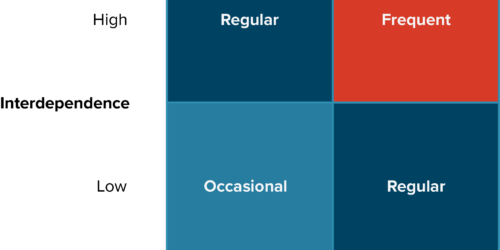Anatomy of the perfect meeting invitation email [includes templates]
Tip: Be sure not to miss the downloadable business meeting invitation email templates at the end of the story
“Hey, do you have a minute?”
That’s the best invitation for the most common type of meeting. You know, the kind we used to just call a conversation, or even simply “talking to Fred.” But with communications increasingly going digital, we’re frequently holding these ad-hoc conversations using meeting software online. To invite someone to talk, we fire off a quick note with a link and a number. Easy.
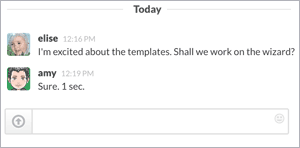
We begin to think that this is what meeting invitations should look like, and we start to schedule meetings on the calendar with just a date and the link – skipping all the details people need to make that meeting worth attending in the first place. It’s become so easy to just add a meeting that there are now between 36 and 56 million meetings every day in the US alone.
Leading to lots of poor meetings, wasted time, and overall sadness.
This guide will tell you everything you need to avoid those problems and make sure your meeting email invitations look professional and help people come prepared.
Related: The Anatomy of Meeting Records That People Will Use
8 parts of an excellent meeting invitation email
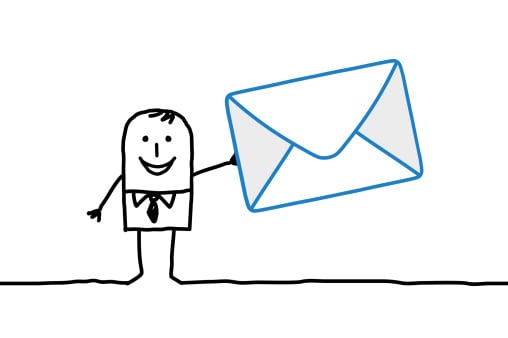
Four required and four optional, these elements make for informative and professional email invitation messages.
- Succinct Subject Line (required)
- Personal Introduction
- Required Preparation
- Meeting Date and Time (required)
- Location (required)
- Meeting Purpose (required)
- Agenda
- Invitee List
1. Succinct Subject line (Required!)
Just the facts, ma’am.
Follow best practices for any email by keeping your invitation subject line short and easy to scan. Include the meeting name, date, and an indication of what kind of invitation you’re sending.
We use this pattern for the email invitation subject lines in Lucid Meetings.
Type of request + Meeting Date + Meeting Name
ExampleMeeting invite for October 4th: Project Status Update
Of course, you don’t always know when the meeting will happen, and scheduled meetings get moved. In those situations, we use variations on the basic pattern:
- Meeting request from Elise Keith: Project Kickoff
- Scheduled: Project Kickoff for September 23rd
- Rescheduled: Project Kickoff moved to September 24th
- Canceled: Project Kickoff on September 24th
Why this format works
People instantly know when you’re requesting their time and the main topic of your meeting without even opening the email.
 Common Mistake to Avoid:
Common Mistake to Avoid:
Abbreviations in the subject line
Many groups develop subject line abbreviations to aid a quick scan of meeting email, using subject lines such as:
[PM-MTG] check in
This can work great with a team that knows the abbreviation and who will get the meeting on their calendars automatically. When you invite someone outside your group, though, this shorthand falls apart. Believe it or not, not everyone uses Outlook or Google Calendar, so you need to actually include the meeting date in your subject line. And while your team knows that “PM” means “program manager” and “mtg” means “meeting”, people from outside your group may not.
Recommendation: Use full words in your email subject line.
2. Personal Introduction (optional)
If you’re meeting with a group that doesn’t meet regularly, add a short personal note to the top of your meeting invite email to provide much needed context.
Something like “Hello everyone, Looking forward to seeing you all at the big project kickoff!” or “As we discussed on the phone last Tuesday, here’s the invitation email for our upcoming demo.” These quick notes help busy people remember who you are and why they’re receiving this invitation.
3. Required Preparation (optional)
Do people need to prepare reports, review a design, or gather facts to contribute to the meeting? Do you need people to RSVP so you can plan?
If you need people to come prepared, make sure you clearly provide these instructions right at the top of your message. Otherwise they will get missed.
4. Meeting Date and Time (Required!)
Make sure to include the full date and time of the meeting, including the time zone, in the text of your invitation email. Spelling out month names helps avoid confusion for people from other countries who are used to seeing different date formats.
Example: September 15, 3:00 - 3:45PM US/Pacific
If you’re inviting people who live in other time zones, use TimeandDate.com to figure out the correct time and date for your invitees. When you use a calendar or meeting management software to send your invite, the recipients’ calendars will also automatically translate the date and time in the attached calendar file to their preferred time zone.
Curious about the preferred date formatting in other countries? Scroll to the bottom of the moment.js demonstration page and click to see the examples rendered in each country’s preferred format.
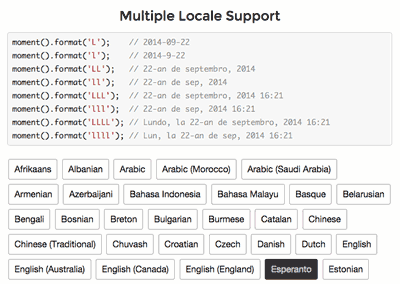
Moment.js screenshot, so you can correctly write September 22nd in Esperanto!
5. Location: Physical or Online (Required!)
A meeting location may be either a physical place like a conference room, instructions for joining a virtual meeting, or both.
For virtual meetings, the location field should include a link to join the online meeting, audio instructions or phone numbers, and any system requirements. For in-person meetings, the location should include enough detail that those invited can find the meeting on a map.
TIP: If you are sending invitations using a calendar program like Outlook, make sure to include the meeting phone number in the location field of the event. This makes it easy for people joining the meeting while traveling to dial in from a cell phone.

Screenshot: The meeting audio and link appear in the location field on my calendar.
6. Meeting Purpose (Required!)
Why are you holding this meeting? What will it accomplish? Ideally, you can state the purpose of the meeting in a single sentence. The best purpose statements will describe the desired result for the meeting.
Examples:
- Get a demo and answer questions
- Share project status updates
- Create a list of issues with the invoicing process
- Develop a high-level strategy for the upcoming conference
- Compare offers from vendors and make a selection
- Review completed development and approve the work
7. Agenda (optional)
Include the meeting agenda when you want participants to prepare in advance. The agenda needs to include the order in which you plan to discuss key topics and any instructions or material people should read before the meeting.
Invitation emails sent using meeting productivity software will take care of this automatically.
 Common Mistake to Avoid:
Common Mistake to Avoid:
Sending reports as attachments
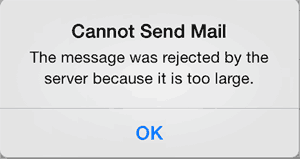
iPhone error message seen when trying to send email with large attachments.
Many meetings center around reviewing documents. Designs, reports, contracts, proposals, plans, estimates, research findings – all result in documents that get shared and discussed by those invited to your meeting.
Attaching these documents directly to the email invite is simple and fast, but it creates problems.
- The email gets blocked.
This is the big one. Some mail servers are set up to block email that appears too large, has too many attachments, or that has attached files that the system determines may be harmful. When this happens, some people will never get your invitation. - The attachments can’t be opened.
According to Litmus Lab’s Email Market Share report, the number one email client is the iPhone. Some email clients will fail to open messages that appear too large, and some documents can’t be opened on all systems. Ever try to open Excel attachments on an iPhone? Not fun. - The email gets lost.
You know this happens. Inboxes full of messages, so thank goodness you have the meeting invite on your calendar or you’d never make it. Many meetings lose precious time and attention as people hunt through old email to find the documents they’ve lost from their inbox.
Recommendation: Add a link to an online location where people can preview and/or download meeting documents. If you don’t already have a solution for this, you can easily share links to files using free file sharing services such as Dropbox or Google Drive.
Related: 4 Ways to Run Successful Meetings People Won’t Hate
8. Invitee List (optional)

Need the social proof that this meeting will be worthwhile? Or that you have the backing authority to schedule it? Or that people will miss out if they don’t go? Include the list of people invited to the meeting at the end of your invitation.
Takeaways
- Send detailed meeting invitations for scheduled business meetings. Invitations aren’t necessary for ad-hoc meetings.
- Failure to send a good invitation email is inconsiderate and makes people unhappy!
- The amount of information you need to write from scratch depends on the software you use to send your invitation email.
- There are 4 required and 4 optional pieces of information to include.
- Don’t forget the follow up – read this article to learn how to create professional meeting records.
General FAQ
What information is REQUIRED for a meeting invitation?
- A succinct, formatted subject line
- The meeting date and time
- The location of the meeting
- The meeting purpose and any expected outcomes
What other information might go into meeting invitation?
- A personal introduction
- Any required preparation
- The planned agenda
- The list of people invited
What are some common mistakes to avoid?
- Avoid using unfamiliar abbreviation in the subject line
- Don’t send large reports as attachments
- Don’t bury important information; put it close to the top
Bonus: business meeting invitation email templates!
To make this extra-easy, please feel free to use our email invitation templates. We’ve put together a simple PDF file for easy copying and pasting into your email client.
It includes:
- A basic email invitation template
- A complete invitation, with all 8 sections
- A scheduling request template

